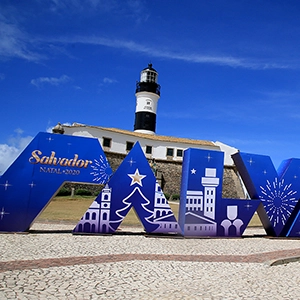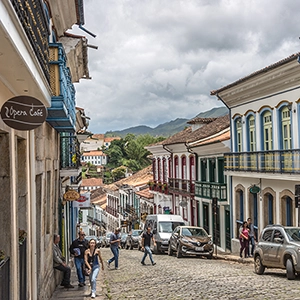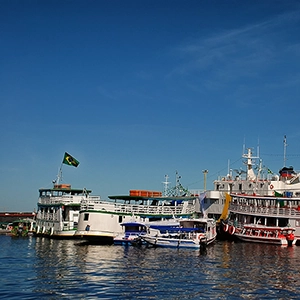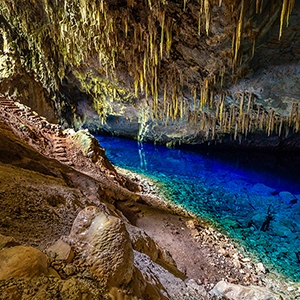Explore The Colonial Architecture Of Olinda
Nestled in the northeastern corner of Brazil, Olinda is a picturesque city that serves as a living testament to Brazil's colonial past. Founded in 1535 by the Portuguese, Olinda is one of the oldest cities in Brazil and a designated UNESCO World Heritage Site. The city's rich history and well-preserved colonial architecture make it a must-visit destination for history buffs and architecture enthusiasts alike. In this article, we will explore the highlights of Olinda's colonial architecture and delve into the fascinating stories that shaped this unique city.
Overview of Olinda's Colonial Architecture
Olinda's colonial past provides a diverse array of architectural styles, resulting from the city's tumultuous history. As a key port during the Brazilian colonial period, Olinda experienced periods of prosperity and decline, as well as invasions and occupations by the Dutch. The variety of architectural styles present in the city is a direct reflection of these historical events and the influence of different colonial powers. The most prominent architectural styles found in Olinda include Baroque, Rococo, and Neoclassical.
Many of Olinda's buildings are characterized by their colorful facades, intricately carved stonework, and elegant wrought-iron details. The layout of the city, with its narrow streets and uneven terrain, adds to the charm and character of the colonial heart of Olinda. Walking through the city's historic center feels like stepping back in time, as visitors are surrounded by vibrant colors, cobblestone streets, and stunning architectural masterpieces.
Museu de Arte Sacra de Pernambuco – A Fusion of Baroque and Rococo Styles
The Museu de Arte Sacra de Pernambuco, also known as the Museum of Sacred Art of Pernambuco, is housed in the former Convent of Santa Bárbara. Constructed between 1724 and 1832, this elegant building is a fantastic example of the Baroque and Rococo architectural styles. The convent's church features a beautiful gilded altarpiece, an ornate wooden pulpit, and intricate detailing throughout the interior.
The museum's collection includes an impressive array of religious art, including paintings, sculptures, silverware, and liturgical garments. These artifacts provide valuable insight into the role of religion in Brazil's colonial history and showcase the craftsmanship and dedication of local artisans. The Museu de Arte Sacra de Pernambuco is a must-visit for those interested in understanding the religious and cultural influences on Olinda's colonial architecture.
Basílica e Mosteiro de São Bento – A Baroque Masterpiece
Another architectural gem in Olinda is the Basílica e Mosteiro de São Bento, or the Basilica and Monastery of St. Benedict. Founded in 1582 by Brazilian Benedictine monks, the monastery has a rich history, having served as a stronghold during the Dutch invasions and a repository for Brazil's first printing press. However, the true highlight of this attraction is its Baroque-style church, which dates back to the 1760s.
The church's interior is adorned with striking gilded carvings, exquisite woodwork, and vibrant frescoes, making it one of Brazil's most exceptional Baroque architectural masterpieces. The main altar features a beautiful statue of the patron saint, St. Benedict, carved from cedar wood and bathed in gold. The intricate detailing and craftsmanship exhibited in this church are prime examples of Brazilian Baroque art and architecture.
Igreja do Carmo – The Oldest Carmelite Church in Brazil
Located on a hill overlooking the city, Igreja do Carmo is another significant architectural landmark in Olinda. Established in 1580 by the Carmelite Order, this church is the oldest of its kind in Brazil. Although partially destroyed and rebuilt during the Dutch invasion, the surviving elements of its original structure provide fascinating insights into the city's history and architectural evolution.
The church boasts a mixture of Baroque and Rococo elements, highlighted by its striking gilded altar, impressive collection of azulejos (Portuguese blue-and-white ceramic tiles), and ornate wood carvings. The church's simple façade is typical of the region's 17th-century architecture and provides a stark contrast to its rich and ornate interior.
Casa dos Sete Bicos – A Unique Example of Olinda’s Domestic Architecture
When exploring Olinda's colonial architecture, it's essential to appreciate not only the grand churches and monasteries but also the city's distinctive domestic architecture. The Casa dos Sete Bicos, or the House of Seven Gables, is one such example. Constructed in the 18th century, this four-story building features a unique architectural design, with seven prominent triangular gables along its façade.
Located in the heart of Olinda's historic center, the House of Seven Gables is a prime example of the city's architectural diversity and provides a fascinating insight into the daily lives of Brazil's colonial society.
Olinda is a treasure trove of colonial architecture, which not only reveals the city's rich history but also showcases the incredible artistry and craftsmanship of Brazil's past. The vibrant combination of Baroque, Rococo, and Neoclassical architectural styles makes Olinda an ideal destination for those looking to experience the unique beauty of Brazil's colonial past. Whether you're exploring the ornate churches, learning about the city's history in the local museums, or simply wandering the colorful streets, Olinda is sure to leave a lasting impression on all who visit.









